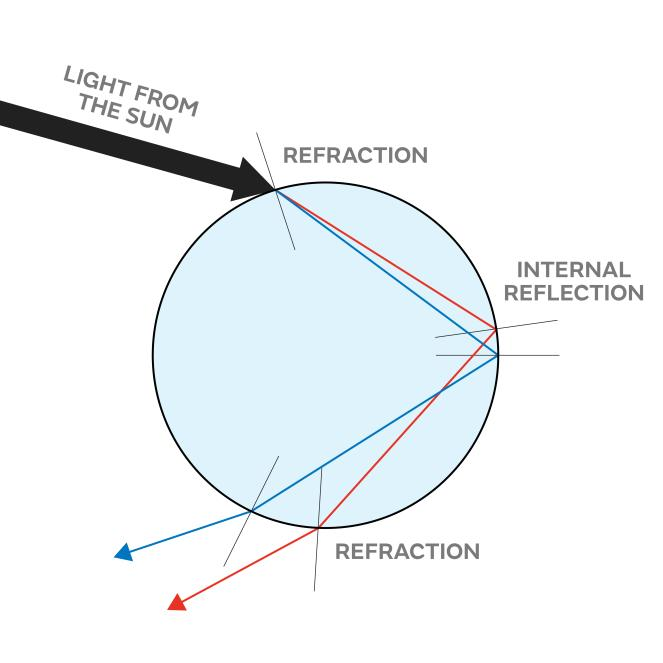The Infinite Sky: Exploring Its Vastness and Mystery
Written on
Chapter 1: The Enchantment of Childhood Rhymes
As children, many of us cherished a captivating poem or rhyme—one that continues to resonate even in adulthood. This poem, often sung in classrooms, on stages, or before bedtime, is a beloved piece among children globally. It features five stanzas, yet typically, only the first four are recited, with the fifth often overlooked. The first stanza tends to linger in our minds, especially the opening lines that contribute to its enchanting “melodic and rhythmic pattern.”

Image Credit: pinterest.com
This delightful rhyme transports us into a realm of fantasy, prompting us to reflect on and uncover the secrets of the infinite cosmos. The imagery of a sparkling star fixed in the sky serves as a central motif, igniting both our spirits and imagination.
However, the true vastness of the sky, far more awe-inspiring than a solitary twinkling star, is adorned with countless celestial bodies, including planets, comets, meteors, and black holes, all part of colossal galaxies. Scientific findings suggest there are around 2 trillion galaxies in our observable universe, with an astounding estimate of 10^25 planets orbiting stars, not to mention a potential 10^26 to 10^30 additional starless planets. Most galaxies range from 1,000 to 100,000 parsecs in diameter (approximately 3,000 to 300,000 light-years) and are separated by millions of parsecs (or megaparsecs). The existence of exoplanets, often obscured by their host stars' brightness, adds to the complexity, and the number of rogue planets is expected to surge in the future.
According to Forbes, many galaxies remain undiscovered due to our limited detection capabilities, as even the most advanced observatories cannot penetrate the depths of the universe that elude us. Astonishingly, the observable universe constitutes only a fraction of the entire cosmos. Scientific reports indicate that we have identified a radius of 46 billion light-years, where one light-year equals approximately 6 trillion miles (9 trillion kilometers). The sheer scale of these figures can be overwhelming. Some scientists propose that the universe may be googols of times larger than what we currently perceive. Additionally, this observable universe is continually expanding at an unknowable pace.
In essence, the quest to comprehend the vastness of the universe presents a paradox. Despite the myriad technologies and formulas developed to measure it, the universe remains largely a riddle. Scientific findings often create more questions than answers, using intricate jargon that can be difficult to grasp.
The pressing question at hand, which serves as the essence of this essay, revolves around the immensity of the sky and its distance from Earth. Scientific claims frequently complicate our understanding, instead of providing clarity.
Many scholars contend that, despite science’s impressive claims regarding extensive research and results, it often fails to elucidate numerous natural phenomena. Instead, scientific knowledge resembles a patchwork of incomplete models, where every answer tends to unveil further inquiries. This ongoing search leads to a cycle of new questions and perspectives without ever arriving at a definitive conclusion.
Even if we could fully elucidate natural phenomena, the intricate beauty and mystique would likely be lost in the complexities of scientific explanation. Consider the phenomenon of a rainbow:

Image Credit: metoffice.gov.uk
Rainbows, formed under specific meteorological conditions, occur when sunlight interacts with raindrops. This interaction separates the electromagnetic spectrum into various colors, creating the visual perception of distinct bands, leading to the beautiful arc we see in the sky. Generally, colors in a rainbow overlap, producing a sheen of white light that brightens the inside of the arc.
However, in philosophical and literary contexts, the seven vivid colors of a rainbow symbolize the connection between the earth and the heavens, bridging humanity and the divine. Rainbows evoke hope and promise, emerging only after a storm, with each color representing different virtues and ideas.
Similarly, we seek an understanding of the sky that resonates emotionally, not just intellectually. Philosophically, we can view the "sky" or the "vault of heaven" as a concept, symbolizing the limitless power of imagination. As John Muir expressed, "The power of imagination makes us infinite," unlocking endless possibilities. Einstein echoed this sentiment, stating, "Knowledge is limited; imagination encircles the world." Imagination allows us to grasp the essence of our universe, revealing a truth that transcends the physical realm.
Rumi, a 13th-century Persian mystic poet, succinctly encapsulated this notion:

Image Credit: pinterest.com
Rumi’s perspective suggests that reason alone cannot elevate us to the heights of the firmament, nor can it fully articulate its majesty through mere scientific knowledge. Rather, it is through vision and imagination that we can truly comprehend the sky.
Furthermore, this implies that the sky reflects our hearts; as we cultivate qualities like generosity, patience, and compassion, we elevate the sky around us.

Image Credit: stock.adobe.com
The broader our perspectives, the more expansive the sky appears. Stars symbolize the positive traits within us, representing the vast spectrum of human emotions, with estimates indicating that humans experience over 34,000 emotions, despite having only seven fundamental feelings. The four points of a star symbolize balance and represent essential elements of life: earth, air, fire, and water.

Image Credit: contentinacottage
In this light, Henry David Thoreau's assertion that "a bluebird can carry the sky on its back" resonates deeply. Its blue feathers reflect the blue light spectrum, symbolizing the celestial realm, while its presence heralds the arrival of spring—an emblem of renewed hope and life.
As we traverse the boundless expanse between the earthly and heavenly realms, the bluebird mirrors the sky's colors, embodying the freedom to soar, much like the human imagination.
Chapter 2: The Power of Imagination
The first video captures the essence of vastness through the worship song "Wide As The Sky" by Matt Redman, offering a lyrical journey into the limitless expanse of the universe.
The second video, "Bravo! Vail High Notes: The Vast Sky," provides a visual exploration that complements our understanding of the sky's grandeur.